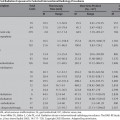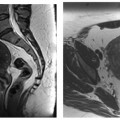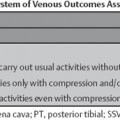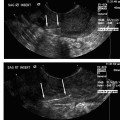1 Clinical Patient Management Brian F. Stainken and Gary P. Siskin “For most of history, Anonymous was a woman.” Virginia Woolf It is time for a textbook focused on women’s health and interventional radiology (IR) for very many reasons. The most obvious, and possibly least significant, is that IR has matured as a subspecialty and we have begun to refine our body of knowledge as it concerns this field. We have learned, and now understand, that the anatomic and physiologic differences between women and men present unique challenges and merit considered approaches for the interventional radiologist. But there is a lot more below the surface. To a large degree, the success that IR has enjoyed in the transition from benchtop to clinic is because of women. This is because women have risen from the shadows to become the primary health care decision makers for themselves and for their families. It is because women were willing to join us and upset the status quo when we discovered a way to avoid uterine amputation for leiomyoma. Women saw us for what we are, what we could be, and how we could help address their unique health care needs. They were willing to come to our clinics and help us fight back those opposed to change. Women were willing to listen, to learn, to consider, and to believe. This text is offered as a beginning, an attempt to compile our work product, not by organ system but by patient gender. To the extent that the medical literature supports specific approaches or solutions, they are offered. Equally important is that this is a book about what we have yet to learn about these medical problems and the solutions that we hope to offer in the future. The anatomic and physiologic differences between men and women and the resulting differences in their health care needs was recognized by the Federal Department of Health and Human Services in 1991 with the establishment of the Office on Women’s Health. This office was established with the broad mandate of raising awareness of women’s health issues and promoting activities that improve the health of women. In addition, its mission is to coordinate a comprehensive women’s health agenda to address health care prevention and service delivery, research, public and health care professional education, and career advancement for women in the health professions.1 The attention paid to these issues has raised an awareness of several key concerns regarding the health care needs and utilization of women. These were highlighted by Brittle and Bird, in a report produced for the Office of Women’s Health.2 Table 1.13–11 outlines some specific examples from that report of how disease states may differ between the sexes.2 Although these specific differences are important on a patient-to-patient basis, there are more general differences that demonstrate how gender impacts the relationship between female patients and the health care system. Brittle and Bird found that women utilize the health care system more often than men, primarily due to their higher use of preventive care services. This does not appear to carry over into better care of acute conditions in women. The cause of this discrepancy is likely multifactorial. In part, it may be because, though the differences outlined in Table 1.1 are recognized, this recognition has not yet translated into tangible changes in how these disease processes are addressed in men and women. Historically, women have not participated in clinical trials as often as men and therefore, it is not really known if many medical treatments are as appropriate for women as they are for men. The differences in the management of acute conditions in men and women may also be due to the fact that women typically have poorer access to health care than men. Despite the fact that slightly more women than men have health insurance coverage, women are more likely to be covered as dependents on a man’s health insurance policy, which makes them vulnerable to disruptions in care and may limit access to care in times of acute need. Salganicoff et al12 also found that for many women, counseling by physicians about health risks and health promoting behaviors is deficient. All of these findings have led to a growing movement toward a more gender-based system of care, which will also encourage research to support this model and demonstrate its effectiveness. Fortuitously, IR has developed a focus in women’s health during the past decade, at the same time that the above discussions have been going on at a national and global level. A quick glance at the Table of Contents of this textbook will show a list of solutions that are largely directed toward conditions prevalent in women, many of which, until recently, were not performed on a regular basis. In other words, the scope and nature of IR procedural care has changed dramatically over the past decade, in striking parallel to changes in the culture of health care.
Women’s Health Care Needs
| Before menopause, women have lower blood pressure than men do. After menopause, systolic blood pressure in women is higher than in men. |
| Women with peripheral arterial disease are at greater risk for a compromise in daily function and quality of life than are men. |
| Women are more likely than are men to experience coronary vascular injury and bleeding complications after percutaneous coronary interventions. |
| Women have more advanced disease than men do when colon cancer is first diagnosed. |
| Women are at a significantly higher risk for autoimmune disease than are men. |
| Men experience more deaths due to cancer than women do (57% to 43%). |
| Thyroid cancers are more prevalent in women than they are men. |
| Women with Alzheimer disease are more likely to exhibit severe cognitive impairment than do men. |
| Women have a later age of onset of schizophrenia than do men. |
Source: Data from Kim JK, Alley D, Seeman T, Karlamangla A, Crimmins E. Recent changes in cardiovascular risk factors among women and men. J Womens Health (Larchmt) 2006;15:734–746; Collins TC, Suarez-Almazor M, Bush RL, Petersen NJ. Gender and peripheral arterial disease. J Am Board Fam Med 2006;19:132–140; Argulian E, Patel AD, Abramson JL, et al. Gender differences in short-term cardiovascular outcomes after percutaneous coronary interventions. Am J Cardiol 2006;98:48–53; Woods SE, Narayanan K, Engel A. The influence of gender on colon cancer stage. J Womens Health (Larchmt) 2005;14:502–506; Shames RS. Gender differences in the development and function of the immune system. J Adolesc Health 2002; 30(4, Supplement 1)59–70; Bray F, Atkin W. International cancer patterns in men: geographical and temporal variations in cancer risk and the role of gender. J Mens Health Gend 2004;1:38–46; Adlersberg MA, Burrow GN. Focus on primary care thyroid function and dysfunction in women. Obstet Gynecol Surv 2002;57(3):S1-S7; Buchanan RJ,Wang S, Ju H, Graber D. Analyses of gender differences in profiles of nursing home residents with Alzheimer’s disease. Gend Med 2004;1:48–59; Fleming M. Gender differences in schizophrenia: The need for a psychosocial and formulation based analysis? Clin Effect Nurs 2004;8:156–160.
Uterine Artery Embolization
In light of these changes, IR is remarkably well positioned to leverage our skill set in a focused fashion to treat conditions that are either unique to or more prevalent in women. Uterine artery embolization (UAE) is a case in point. Uterine fibroids have been shown to be present in the majority of women aged 35 to 49. In African American women, fibroids are seen in 60% at age 35 and upwards of 80% by age 50.13 Similarly, in Caucasian women, fibroids are seen in 40% at age 35 and almost 70% by age 50. When symptomatic, they are the leading benign cause of hysterectomy in this patient population. Given the possible morbidity associated with the most commonly performed treatment option (surgery), a less invasive treatment option was needed.
The initial work of Ravina et al14 and Goodwin et al15 was published in the mid-1990s and it was not until data was presented at the 1997 meeting of the Society of Cardiovascular and Interventional Radiology (SCVIR) that UAE was widely discussed as a treatment option for this patient population. At that time, most practicing gynecologists believed that UAE was not an effective treatment and had a high probability of leading to significant complications. Patients who elected to seek information about and undergo UAE had to do so without the knowledge and support of their gynecologist, which only fueled the prevailing belief that IR should not be involved in the care of these patients. With time, publications appeared both in the Radiology and Obstetrics and Gynecology literature that supported the success of UAE.
Single-center retrospective analyses have led to multicenter comparative trials and a large-scale prospective registry that consistently has demonstrated that UAE, as a minimally invasive treatment option, could successfully improve health-related quality of life and the severity of symptoms in patients with uterine fibroids.16–21 With Internet-based forums allowing patients to discuss their own experience, prominent individuals undergoing this procedure, and national newspapers raising questions as to why this procedure is not offered to more patients, UAE has increasingly become part of the discussion held with women with symptomatic fibroids. Today, the American College of Obstetrics and Gynecology (ACOG) has supported UAE as a treatment option that should be discussed with patients considering treatment for fibroids.22 In addition, and perhaps more telling, researchers in gynecology have conceptually endorsed UAE by attempting to develop their own treatment options that are based on diminishing arterial flow to the uterus and fibroids.23–25
Stay updated, free articles. Join our Telegram channel

Full access? Get Clinical Tree








